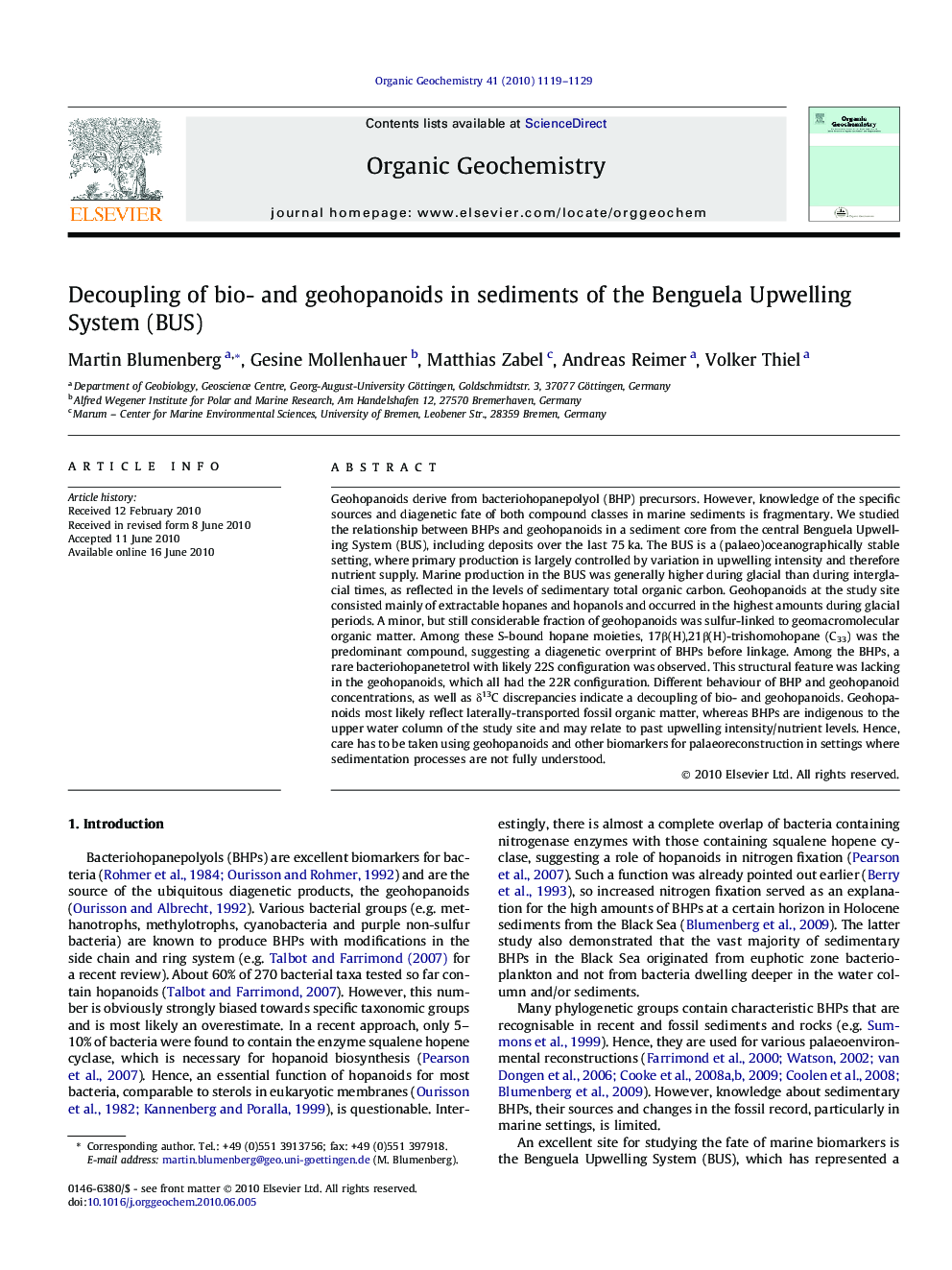| کد مقاله | کد نشریه | سال انتشار | مقاله انگلیسی | نسخه تمام متن |
|---|---|---|---|---|
| 5161850 | 1379659 | 2010 | 11 صفحه PDF | دانلود رایگان |
عنوان انگلیسی مقاله ISI
Decoupling of bio- and geohopanoids in sediments of the Benguela Upwelling System (BUS)
دانلود مقاله + سفارش ترجمه
دانلود مقاله ISI انگلیسی
رایگان برای ایرانیان
موضوعات مرتبط
مهندسی و علوم پایه
شیمی
شیمی آلی
پیش نمایش صفحه اول مقاله

چکیده انگلیسی
Geohopanoids derive from bacteriohopanepolyol (BHP) precursors. However, knowledge of the specific sources and diagenetic fate of both compound classes in marine sediments is fragmentary. We studied the relationship between BHPs and geohopanoids in a sediment core from the central Benguela Upwelling System (BUS), including deposits over the last 75 ka. The BUS is a (palaeo)oceanographically stable setting, where primary production is largely controlled by variation in upwelling intensity and therefore nutrient supply. Marine production in the BUS was generally higher during glacial than during interglacial times, as reflected in the levels of sedimentary total organic carbon. Geohopanoids at the study site consisted mainly of extractable hopanes and hopanols and occurred in the highest amounts during glacial periods. A minor, but still considerable fraction of geohopanoids was sulfur-linked to geomacromolecular organic matter. Among these S-bound hopane moieties, 17β(H),21β(H)-trishomohopane (C33) was the predominant compound, suggesting a diagenetic overprint of BHPs before linkage. Among the BHPs, a rare bacteriohopanetetrol with likely 22S configuration was observed. This structural feature was lacking in the geohopanoids, which all had the 22R configuration. Different behaviour of BHP and geohopanoid concentrations, as well as δ13C discrepancies indicate a decoupling of bio- and geohopanoids. Geohopanoids most likely reflect laterally-transported fossil organic matter, whereas BHPs are indigenous to the upper water column of the study site and may relate to past upwelling intensity/nutrient levels. Hence, care has to be taken using geohopanoids and other biomarkers for palaeoreconstruction in settings where sedimentation processes are not fully understood.
ناشر
Database: Elsevier - ScienceDirect (ساینس دایرکت)
Journal: Organic Geochemistry - Volume 41, Issue 10, October 2010, Pages 1119-1129
Journal: Organic Geochemistry - Volume 41, Issue 10, October 2010, Pages 1119-1129
نویسندگان
Martin Blumenberg, Gesine Mollenhauer, Matthias Zabel, Andreas Reimer, Volker Thiel,